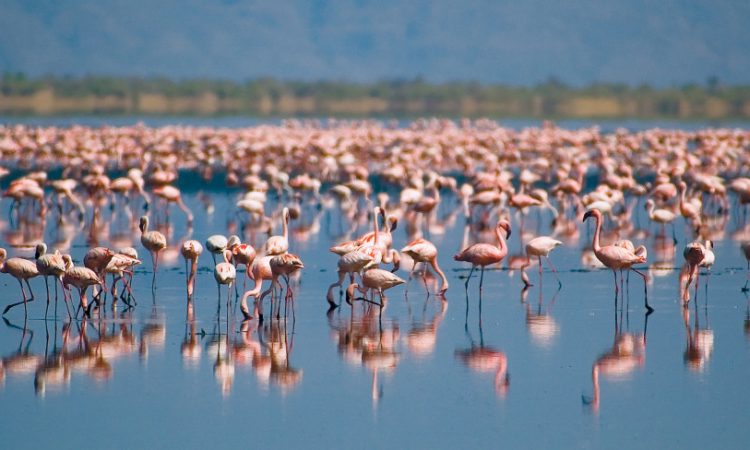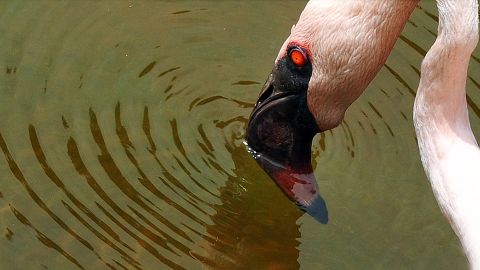Lake Natron : The boiling point of water in Lake Natron sometimes reaches up to 50 degree Celsius which is equivalent to 120 Fahrenheit. Basing on the amount of rainfall in a particular year the amount of alkaline may reach to 9 to 10.5 PH which is almost equal to the ammonium alkali.

The color of Lake Natron is not far from the popular color of other lakes. It is almost equal to other lakes that contains large amount of evaporation process. When water evaporates during dry seasons always lead to the increase in the amount of salt and alkali in the lake. This also lead to the increase in the pests and germs that are familiar to salt and alkali situations to thrive. Some of these germs are like cyanobacteria and other micro bacteria that grows in water sources and they make their own food like other plant species mostly through photosynthesis.
Red pigments inside cyanobacteria provides for long time the red colored water of the lake Natron, sometimes it is also providing the orange colored water.
Lake Natron is mostly red in color. Despite ominous in chemical composition, the lake is almost a thriving an ecosystem for a select few species adapted to its caustic water. The lake water have extreme temperature of up to 140 degrees Fahrenheit that actually promotes blooms of haloarchaea. The haloarchaea are microorganisms that are salt-loving. These organisms are what gives the lake its red colored appearance.
The alkali salt that always accumulates on top of water levels in the lake mostly is red colored or pink in color. This is mainly caused by the germs and pests that are living in water and salty environment. There are also some other germs that are living in water in lake Natron. This is because the environment supports their existence.
The environment around Lake Natron also supports animal habitats. A lot of animals and bird species are living around Lake Natron. Some of these animal and bird species are even very famous. Some of the famous bird species that are living around Lake Natron’s are flamingo and other boneless animals. Also, some fish species that survive in salty and alkali environment are available around Lake Natron. Some of the supporting factors for lives of these animals and birds is the temperature of the place itself that rises up to 41C

One of the fascinating truth about lake Natron is the fact that this is the only place and water body in east Africa that more than two millions bird species known as flamingo are kept. Also, these flamingos are said to be in a dangerous environment of disappearing. They are said to be able to disappear anytime. When the amount of salt in the lake increases even the number of some of living species increases. Cyanobacteria is one of the living entities that seem to be increased rapidly when the amount of salt increase in the lake.
The great number of bird species known as flamingos that are believed to be living around Lake Natron are living are moving in groups around the coastal areas. This is the only place in Tanzania and east Africa in general that is believed to have the large number of flamingos. They are living together, moving together and they even eat together.
Apart from Lake Natron, Tanzania is also blessed with other attractions. Among the wonderful and fantastic attraction in Tanzania is the tallest mountain on the entire plains of Africa, and that is no other than the incredible Mount Kilimanjaro Mountain. Mount Kilimanjaro is not only the tallest mountain on the African continent, but also the highest free-standing mountain in the world. When you are talking about the highest mountain in Africa one must talk about the Kilimanjaro Mountain. Again, the Kilimanjaro Mountain is the only mountain in the world that is the highest free-standing mountain worldwide. The ecological nature of Kilimanjaro Mountain is also considered a unique and fantastic nature of the great African plain. It is believed to be almost every kind of ecological system is found on the Peak of Kilimanjaro Mountain: these ecological systems are the land for cultivation, rain forest ecological system, heath, moorland, and alpine desert, and an arctic summit ecological system.


